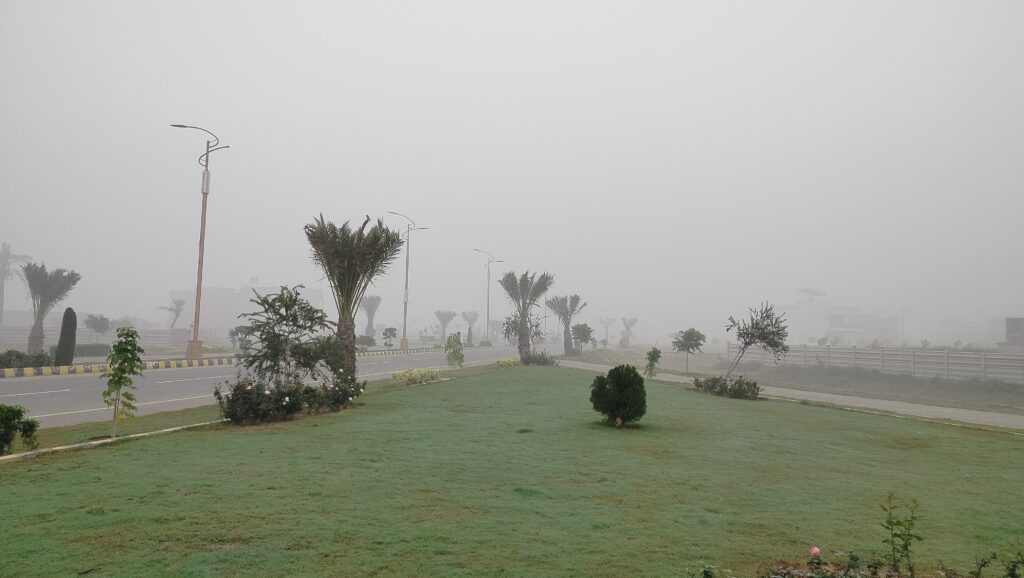Pakistan, a country with diverse landscapes ranging from towering mountains to vast deserts and fertile plains, is facing significant challenges due to climate change. Although Pakistan contributes less than 1% to global greenhouse gas emissions, it ranks among the top countries most vulnerable to the impacts of climate change. The effects are already visible in the form of extreme weather events, changing rainfall patterns, glacial melting, and threats to water, agriculture, and human health. This blog explores how weather and climate change are impacting Pakistan and what the future might hold.
Changing Weather Patterns
Over the past few decades, Pakistan has witnessed noticeable changes in its weather patterns. Summers are becoming hotter, and winters are turning more unpredictable. The country has recorded some of the highest temperatures on Earth, with cities like Jacobabad and Turbat reaching over 50°C (122°F). These rising temperatures have led to more frequent and prolonged heatwaves, especially in southern parts of the country.

Rainfall patterns have also shifted. Monsoon rains, once predictable, are now irregular, with some areas experiencing intense downpours and others facing droughts. Flash floods have become more common, overwhelming infrastructure and displacing communities. For example, the devastating 2022 floods affected over 33 million people and submerged a third of the country, showing how vulnerable Pakistan is to climate-induced disasters.
Melting Glaciers and Water Scarcity
The northern regions of Pakistan are home to over 7,000 glaciers, making it one of the most glacier-rich areas outside the polar regions. However, these glaciers are rapidly melting due to rising global temperatures. This has led to the formation of glacial lakes, increasing the risk of glacial lake outburst floods (GLOFs) that can cause massive destruction in downstream communities.
At the same time, the country is heading towards water scarcity. With declining river flows from the Indus River System and overuse of groundwater, Pakistan faces a potential water crisis by 2025, according to some estimates. Climate change is accelerating this crisis by reducing snowmelt timing and increasing evaporation rates due to higher temperatures.
Impact on Agriculture and Food Security
Agriculture is the backbone of Pakistan’s economy, employing around 40% of the workforce and contributing nearly 20% to the GDP. However, climate change poses a serious threat to this vital sector. Changes in temperature, unpredictable rainfall, and extreme weather events affect crop yields, particularly of wheat, rice, cotton, and sugarcane.
Farmers are struggling to adapt to these changes. Droughts reduce irrigation water availability, while floods destroy standing crops. Pest outbreaks are also becoming more frequent due to warmer climates. As a result, food insecurity is growing, especially in rural areas, increasing poverty and social instability.
Health and Environmental Impacts
The changing climate is also affecting human health in Pakistan. Heatwaves have resulted in thousands of deaths in recent years. Rising temperatures increase the spread of diseases such as malaria and dengue fever, especially in densely populated urban areas with poor sanitation.
Moreover, air pollution, combined with rising temperatures, has worsened respiratory illnesses. Karachi, Lahore, and other major cities often face hazardous levels of smog during winter months. Water contamination from floods and poor waste management further escalates health risks.
Urban Challenges and Migration
Urban areas are increasingly vulnerable to climate change impacts. Rapid urbanization without proper planning has left cities ill-equipped to handle extreme weather. Flooding in cities like Karachi during the monsoon season is becoming a regular occurrence, damaging infrastructure and disrupting daily life.
Rural communities affected by droughts and floods are migrating to urban centers in search of livelihoods. This internal displacement adds pressure to already overburdened cities, contributing to the rise of informal settlements and increasing the demand for basic services like water, sanitation, and electricity.
Steps Towards Mitigation and Adaptation
Despite the challenges, Pakistan has taken steps to combat climate change. The government launched the Billion Tree Tsunami and Ten Billion Tree Tsunami projects to combat deforestation and restore ecosystems. Additionally, Pakistan hosted the World Environment Day 2021 with the United Nations, highlighting its commitment to nature-based solutions.
The National Climate Change Policy and Pakistan Climate Change Act 2017 provide a framework for addressing climate issues. However, implementation remains a challenge due to limited financial and technical resources.
Conclusion
Climate change is no longer a distant threat for Pakistan—it is a present and growing reality. The country must enhance its resilience through better planning, investment in climate-smart agriculture, improved disaster management systems, and international cooperation. Public awareness and community engagement are also crucial. While Pakistan cannot stop global climate change alone, it can lead by example and ensure a safer future for its people and environment.


